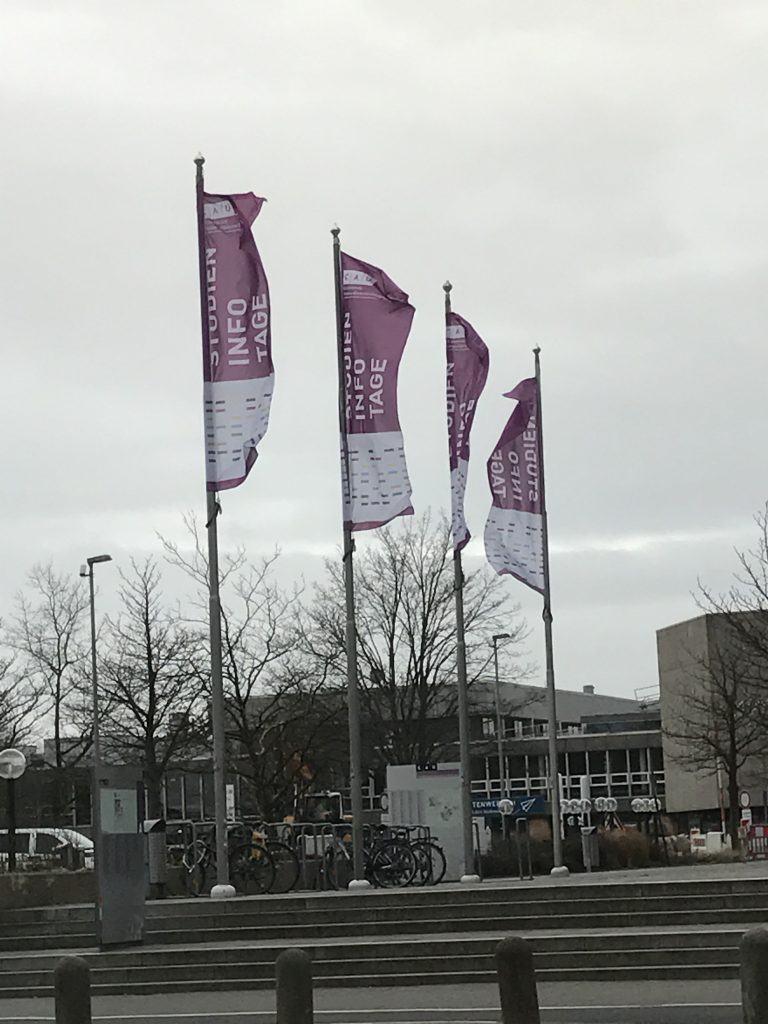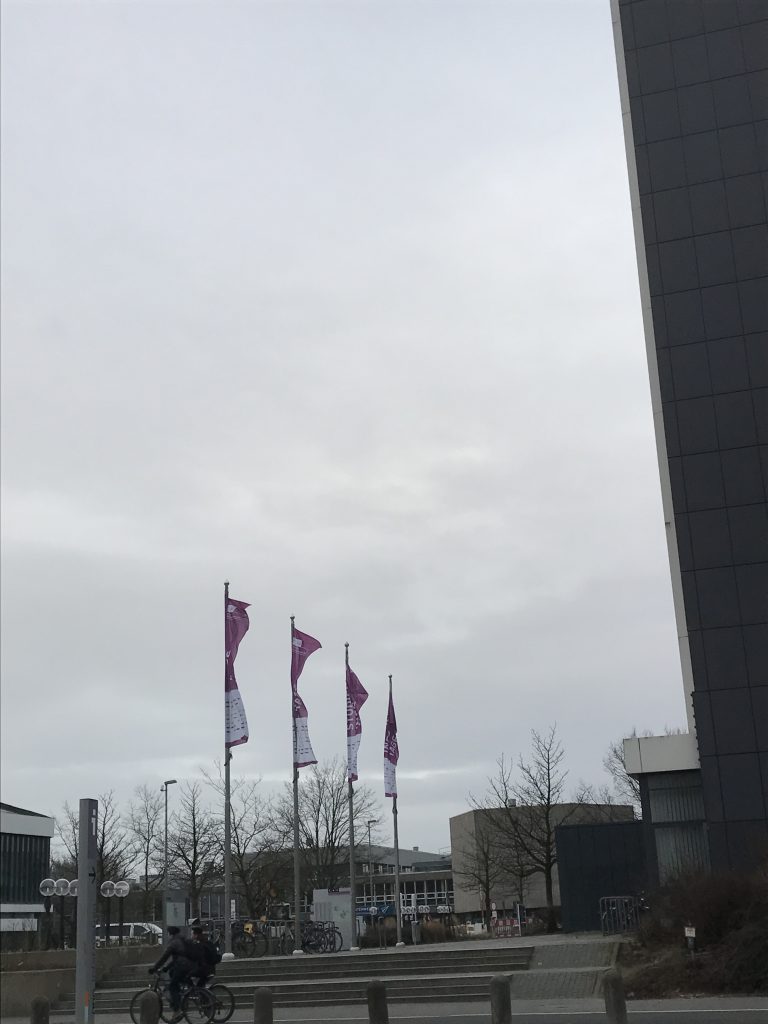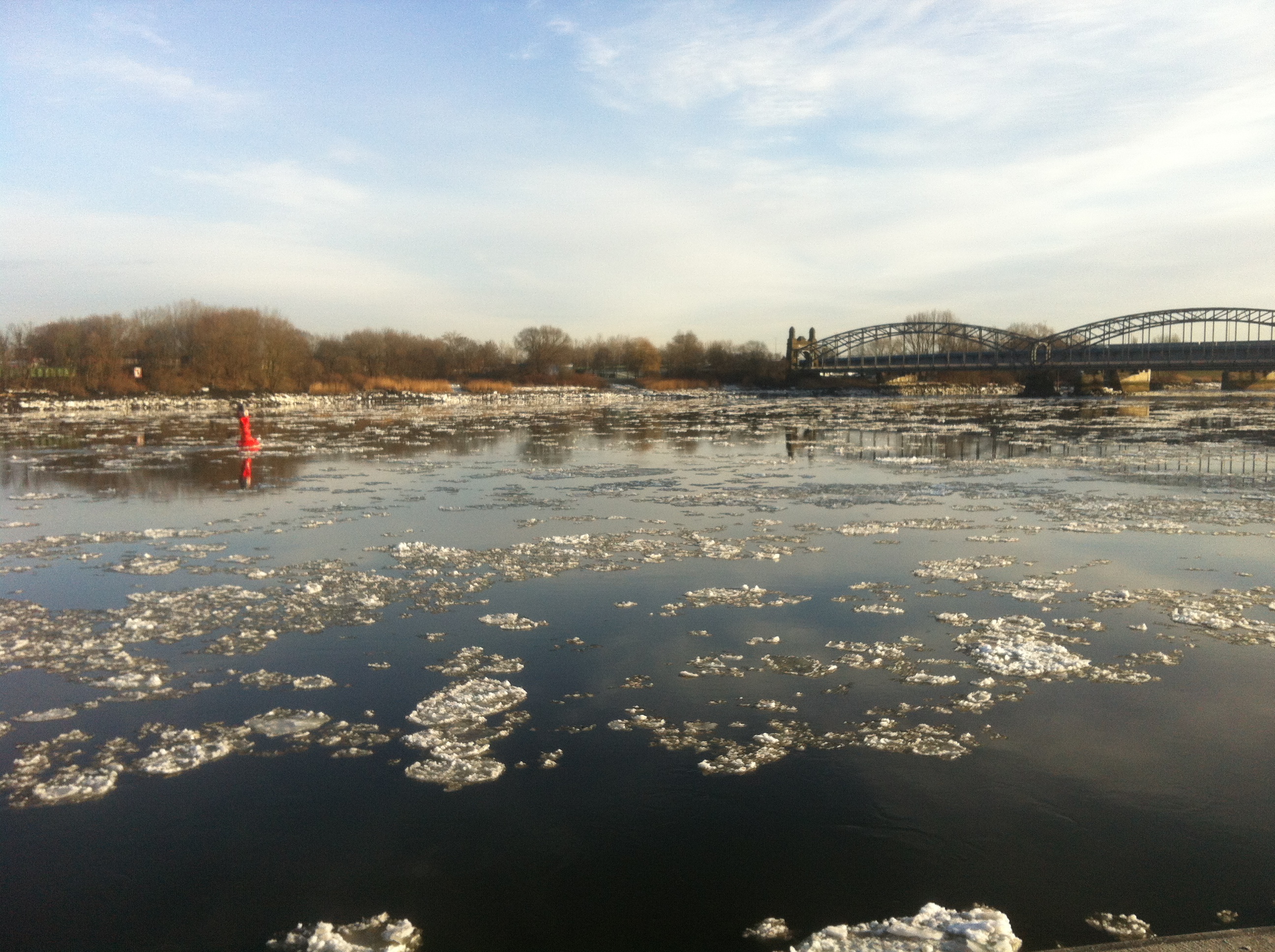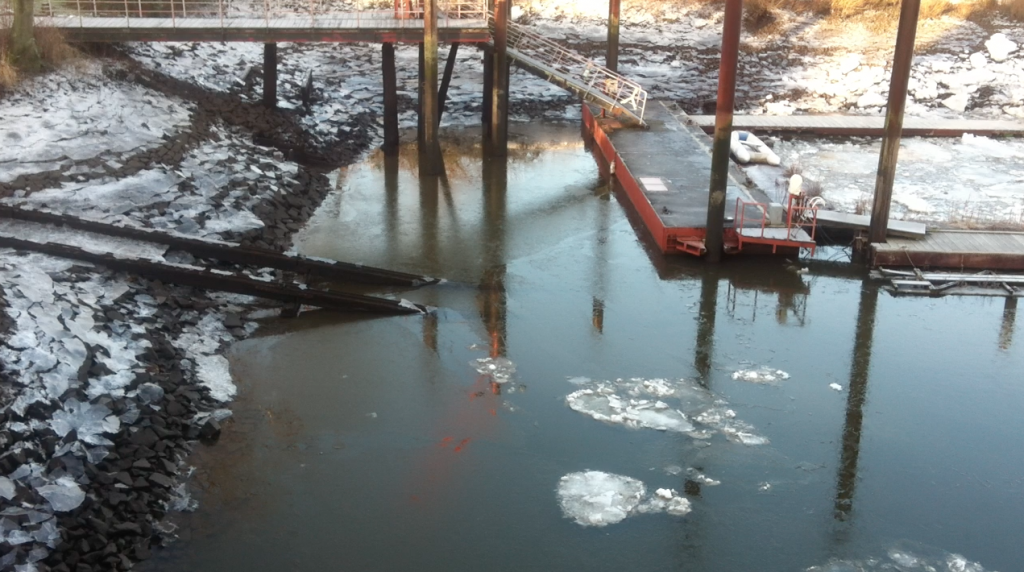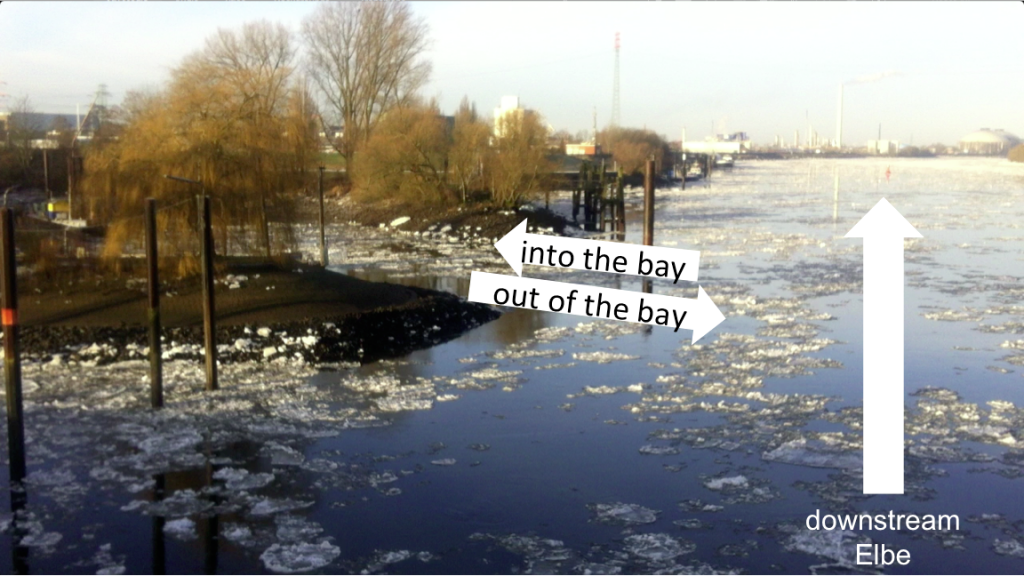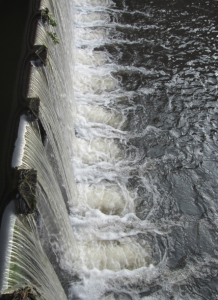The new particle tracking app “Flow on the Go” became available for testing on iOS yesterday. And it is SO AWESOME!!!
The idea is that particle that are advected in a flow can be used to visualize a flow field (similar to what we did when we were at the 13-m-diameter rotating swimming pool in Grenoble, where we added particles with neutral density to the tank in order to track currents). So the app latches on to something that it recognized as “particle” and then displays arrows as it follows that feature from frame to frame. Pretty amazing, isn’t it?
(If you are impatient, scroll to the second-to-last video of this post for my best example, otherwise stay with me as I walk you through different scenarios…)
First, I tested with movies I already had on my phone, for example storm waves in Kiel. Which might not be the nicest test case as wave crests break and thus new “particles” appear, but then vanish in a trough behind another wave etc.. So even though the app tracks them, it all seems a bit messy. The movies always start with a short glimpse of the original movie and then the tracking begins…
Then, I tried the “soap protects you from Corona” demo that my adorable nieces are presenting for you. There is water on the plate sprinkled with pepper (or something), and they dip their fingers in with a little bit of dish soap, break the surface tension, and the particles all get pushed to the edge of the plate. (Spoiler alert: Kids’ hands — no matter how cute — will be recognized as particles…. :-D)
At this point I decided that it was definitely time for my parents and me to go for a walk to film some flows.
Below: Laminar flow towards the edge, then turbulent flow at the bottom. Interesting observations here (beside the super cool flow field that is captured surprisingly well): Where there is a lot of foam and everything appears white, it’s not easy for the app to find “particles” to trace. And when reflections on the water move (like the handrail when there are waves) that looks like “particles” to the app.
Here is one example where there are plenty of bubbles passing by on the other side of the river (which are tracked very nicely) and my dad threw in some leaves on our side so there were particles that showed the recirculation. Nice! (No idea what the app sees in the top left corner, though)
Then I had the brilliant idea to film the large scale flow field with lots of bubbles in it. But, as you, dear reader, will probably have guessed already, the reflected trees are the much more dominant signal. That’s what happens when you film tons of things and only process them afterwards…
But here is a very nice example for you: Fast, laminar flow upstream of the weir, then a waterfall, a submerged hydraulic jump and turbulence at the bottom. Nice!
Back home, I decided I wanted to test some tank experiments. Below I’m first showing a couple of seconds of the original “thermal overturning circulation” movie (because I knew my hands would mess up the particle tracking when I’m dripping dye into the tank) and then cut to the processed one.
I thought that this was one of my better movies with few reflections on the tank, a nice background, etc.. Turns out: Still waaaay too much going on! Reflections on the glass, shadows on the wall behind it as we are watching… I’m sure there are settings in the app that would lead to much better results (if I knew how to use it) but for now I know that using the app is a little more difficult than I thought.
In any case, I think it’s a brilliant app, and I am looking forward to playing with it some more and figuring out how to use it best! There are so many settings that I haven’t figured out yet, so I know what I’ll be doing over the next couple of days… ;-) And I can’t wait to use it on our DIYnamics rotating tank experiments!
![[annotated photo] Photo of water flowing over a weir, annotated with arrows showing particle velocities](https://mirjamglessmer.com/wp-content/uploads/2020/12/FotG-624x350.jpg)
